Political and election-related controversies highlighted in the fifth and six weeks of the campaign period
3rd Report on the TV Coverage of the Elections 2022
METHODOLOGY: CMFR reviewed and analyzed primetime news programs of four broadcast stations: GMA-7’s 24 Oras and 24 Oras Weekend, ABS-CBN’s TV Patrol and TV Patrol Weekend, CNN Philippines’ News Night and Newsroom Weekend, and TV5’s Frontline Pilipinas (no weekend newscast) for two weeks, from March 7 to 20, 2022.
CMFR looked at the following: the number of election-related reports, placement, subject of the report, sources of the report, themes or topics, background, context, and slant.
Also See: “Sidebar: 2nd Report on the Print and Online Coverage of the Elections 2022“
WHILE REPORTS on the campaign trail remained dominant in the news, presidential candidates as well as the Commission on Elections (Comelec) were at the center of several controversies that received a large amount of airtime in all the primetime news programs reviewed. But the phenomenal increase in the crowds in presidential candidate Vice President Leni Robredo’s rallies was not noted as a significant turn in her campaign. When news focused on crowd estimates, it was because of the different estimates given by various groups.
From March 7 to 20, all TV news programs produced a total of 295 reports on the elections. TV Patrol and TV Patrol Weekend had 105 reports or 36 percent of the total number of news reports aired in the program; 24 Oras and 24 Oras Weekend had 94 or 31 percent of its newshole; News Night and Newsroom Weekend had 72 or 41 percent; and Frontline Pilipinas had 24 or 20 percent.
The news programs still followed the campaign trail with 148 reports. Notably different from the last four weeks of media monitoring, more airtime was given to political and election-related controversies, with 61 reports.
More issues, more coverage
The fifth and sixth weeks of the campaign recorded the highest number of reports per candidate since the campaign period started. Aside from the usual coverage of their sorties, candidates themselves were the subject of several controversial allegations by other candidates, parties or government offices. The Comelec was also questioned on its capacity to hold clean and honest elections. (See: “Media mum on possible Comelec misconduct”)
The integrity not only of the presidential candidates but of the Comelec as well was challenged:
- Vote-buying in campaign sorties (See: “Vote-buying: Media flag Election Code violations”)
- False claims on crowd estimates during sorties (See: “Media boost false claims on ‘500k’ crowd at UniTeam rally”)
- Red-tagging of political parties and candidates
- The possible data breach in the Comelec that may compromise the upcoming elections
- Non-participation in Comelec-sponsored debate
- The Marcos family’s PHP 203 billion tax liabilities
- Sara Duterte’s banning of political caravans and motorcades in Davao City
Controversial allegations were directed against presidential candidates Robredo and Ferdinand Marcos Jr.
While Robredo had the most positive slants at 37, she also received five reports slanted against her. Marcos Jr. had 31 reports slanted in his favor and four against him. The negative slants were reports that discussed various allegations but did not air the side of the accused parties.
Marcos Jr. was still the most reported presidential candidate with 91 reports; followed by Robredo with 84; Manila Mayor Isko Moreno with 63; Sen. Ping Lacson with 63; Sen. Manny Pacquiao with 54; and Labor leader Leody De Guzman with 47 reports. Other presidential candidates were covered in 21 reports or less.
Among the vice presidential candidates, Davao City Mayor Sara Duterte was the most covered with 48 reports. There were 30 reports on Sen. Kiko Pangilinan; and 27 on Sen. Tito Sotto. The rest of the candidates were the subject of fewer than 20 reports.
Campaign promises, he-said, she-said
Candidates were quoted in stories that had them as subjects, and in stories about other candidates and issues. Most of the quotes included campaign promises and stances on development and policy issues, as well as exchanges between candidates on political controversies.
Moreno was the most quoted presidential candidate with 50 reports, followed by Lacson with 48. In some of these reports, Moreno and his party made snarky comments about other presidential candidates, particularly against Marcos Jr. and Robredo. Moreno criticized Marcos Jr. on his family’s tax liabilities as well as his non-participation in debates; and Robredo for using “laylayan ng lipunan” to refer to the poor. Lacson denied linking Robredo with communist rebels and some “leftist” groups endorsing and attending her sorties. He also claimed during the period that a “middle man” from Robredo’s camp had asked him to withdraw his presidential bid and to give way to the latter’s candidacy.
Robredo was quoted in 46 reports; Marcos Jr. in 41; and De Guzman and Pacquiao in 38. All the other candidates were quoted in fewer than 10 reports.
Among the VP candidates, Sotto was quoted with 25 reports followed by Pangilinan with 20 reports; Duterte with 19; and Ong with 17; other candidates were quoted in less than 8 reports.
Conclusion
The use of black propaganda and mudslinging by political parties, their standard bearers and supporters has become more evident during the period under review. Some campaign organizers have been boasting about the strength of their campaign, providing numbers and figures that media have not verified. How the media report on these controversies can make a difference in terms of voter education.
But controversies provide another opportunity for candidates to show how they react to allegations or how they handle sensitive questions. The media are correctly reporting these developments, but such reports should not be limited to one side, or from one source.
When rival camps resort to making controversial as well as clearly unfounded allegations, the media need to step back and investigate the issues on their own, so as to provide voters an independent perspective, verification of the basis of the claims, and evidence that prove these as false or truthful. This must be done quickly before falsehood takes over the narrative.
So far, TV news has included the problems of vote-buying, the non-participation of candidates in debates and Comelec’s dubious decisions. Coverage of controversies in itself can be an important way of educating voters, but only if journalists commit to independent investigation that will reveal the truth or the lack of it in the claims being made.
ALSO SEE PREVIOUS REPORTS:
- 2nd Report on TV Coverage: “Election reporting still highlights presidential and vice presidential candidates“
- “Ukraine crisis dominates front pages; Online media fact-check and highlight issues“
- 1st Report on TV Coverage: “Media highlight candidates’ campaign sorties“
- “Print coverage underwhelming, outdone by online media in-depth reports“

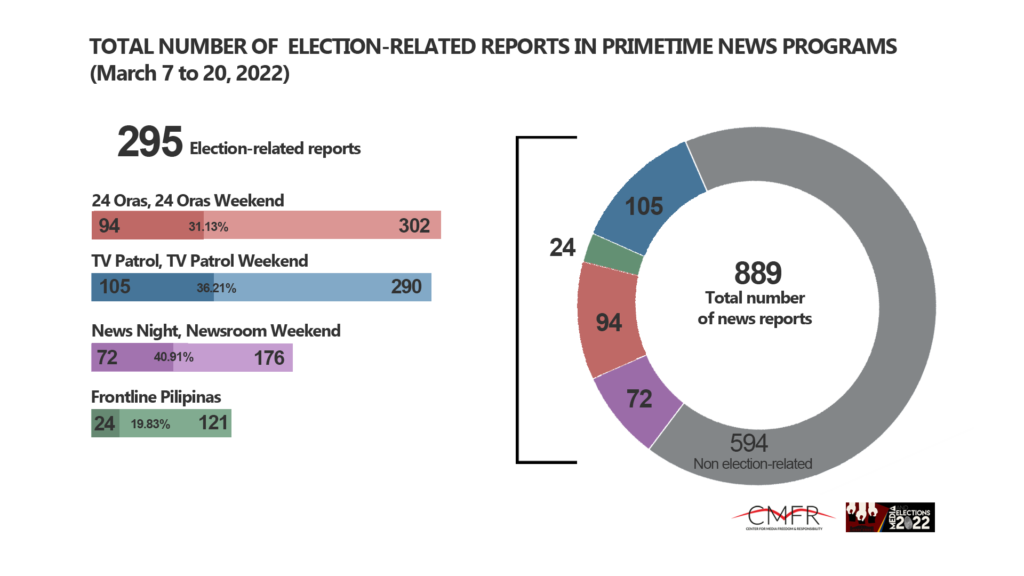
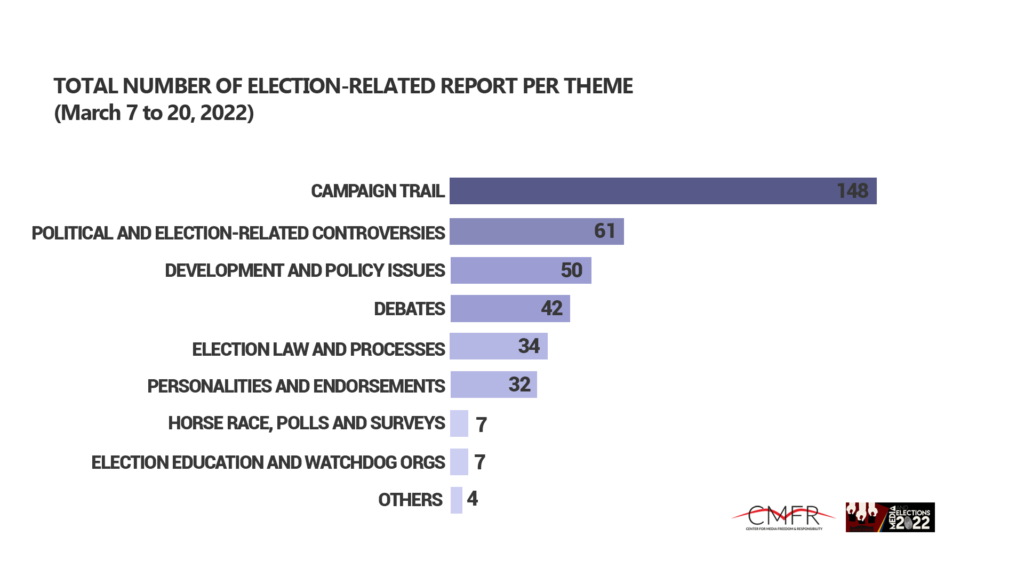
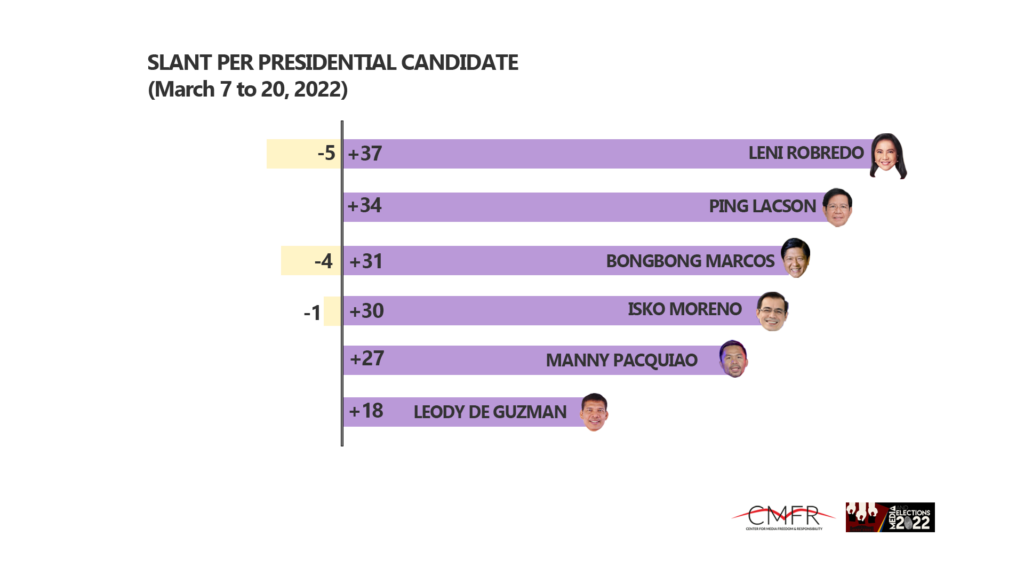
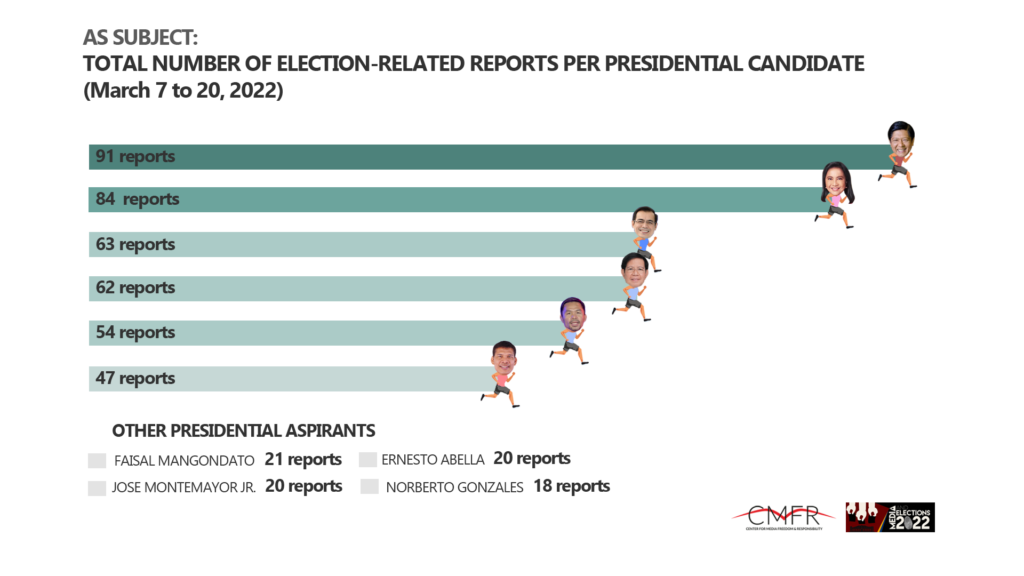
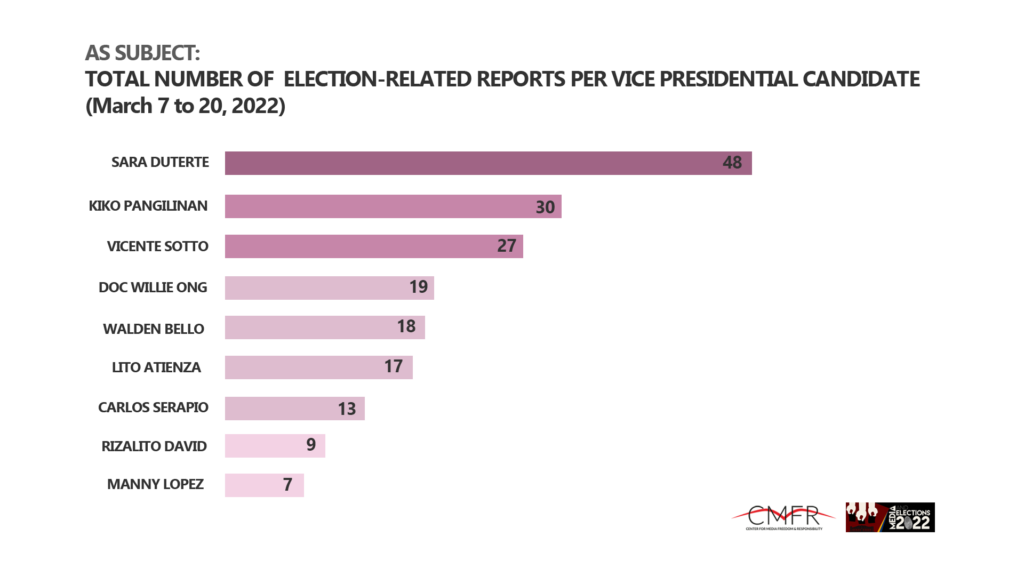
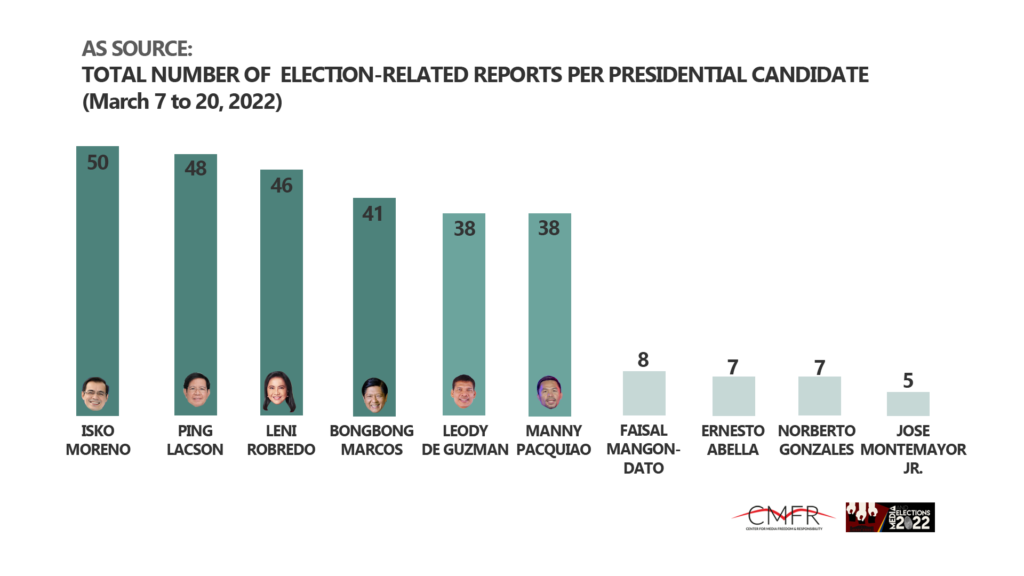
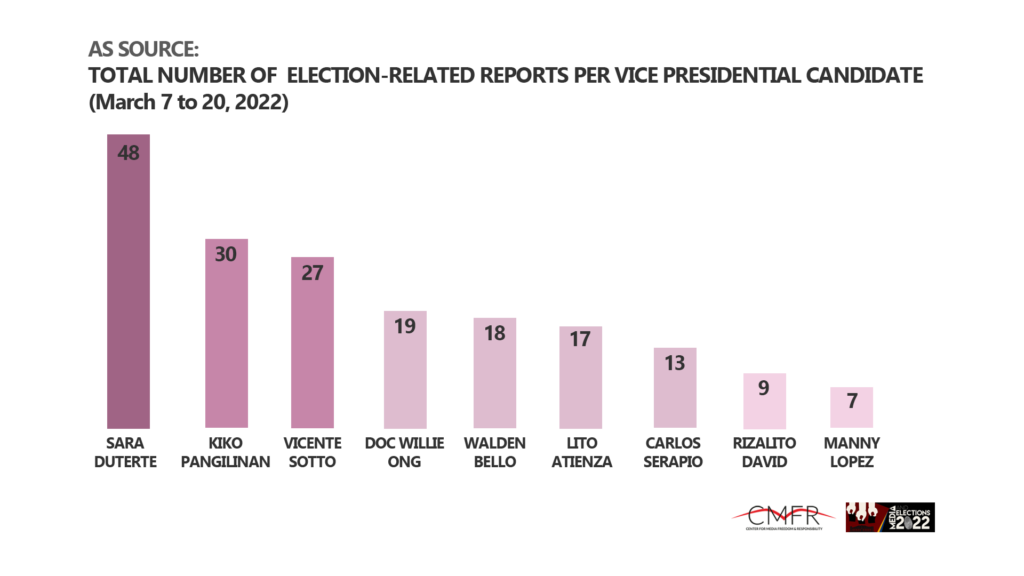
Leave a Reply